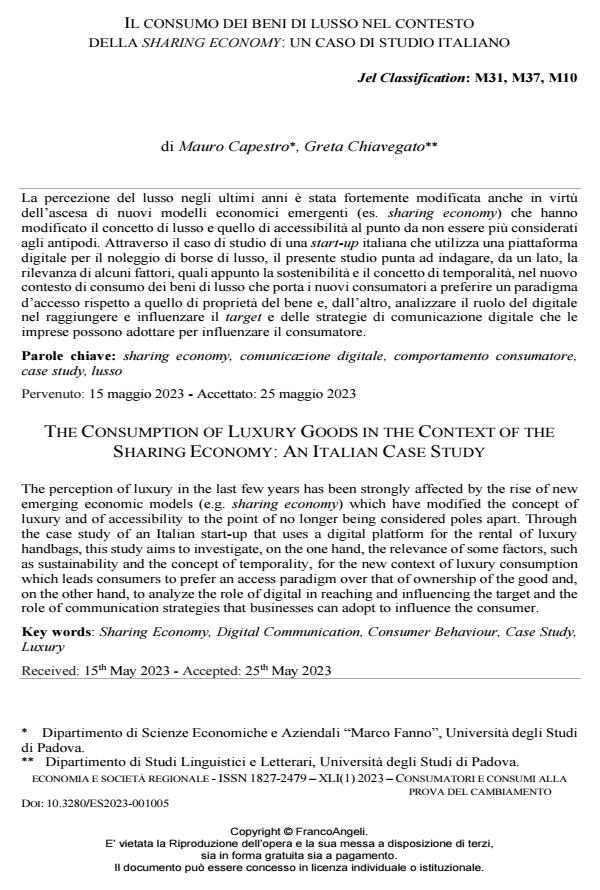Il consumo dei beni di lusso nel contesto della sharing economy: un caso di studio italiano
Journal title ECONOMIA E SOCIETÀ REGIONALE
Author/s Mauro Capestro, Greta Chiavegato
Publishing Year 2023 Issue 2023/1
Language Italian Pages 18 P. 53-70 File size 306 KB
DOI 10.3280/ES2023-001005
DOI is like a bar code for intellectual property: to have more infomation
click here
Below, you can see the article first page
If you want to buy this article in PDF format, you can do it, following the instructions to buy download credits

FrancoAngeli is member of Publishers International Linking Association, Inc (PILA), a not-for-profit association which run the CrossRef service enabling links to and from online scholarly content.
The perception of luxury in the last few years has been strongly affected by the rise of new emerging economic models (e.g. sharing economy) which have modified the concept of luxury and of accessibility to the point of no longer being considered poles apart. Through the case study of an Italian start-up that uses a digital platform for the rental of luxury handbags, this study aims to investigate, on the one hand, the relevance of some factors, such as sustainability and the concept of temporality, for the new context of luxury consumption which leads consumers to prefer an access paradigm over that of ownership of the good and, on the other hand, to analyze the role of digital in reaching and influencing the target and the role of communication strategies that businesses can adopt to influence the consumer.
Keywords: Sharing Economy, Digital Communication, Consumer Behaviour, Case Study, Luxury
Jel codes: M31, M37, M10
Mauro Capestro, Greta Chiavegato, Il consumo dei beni di lusso nel contesto della sharing economy: un caso di studio italiano in "ECONOMIA E SOCIETÀ REGIONALE " 1/2023, pp 53-70, DOI: 10.3280/ES2023-001005